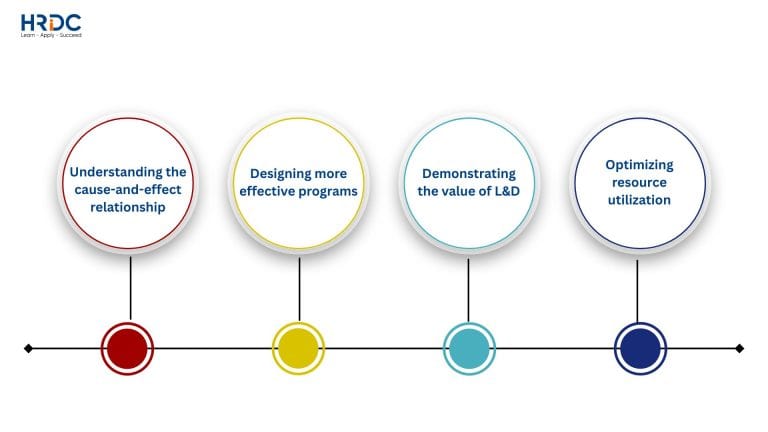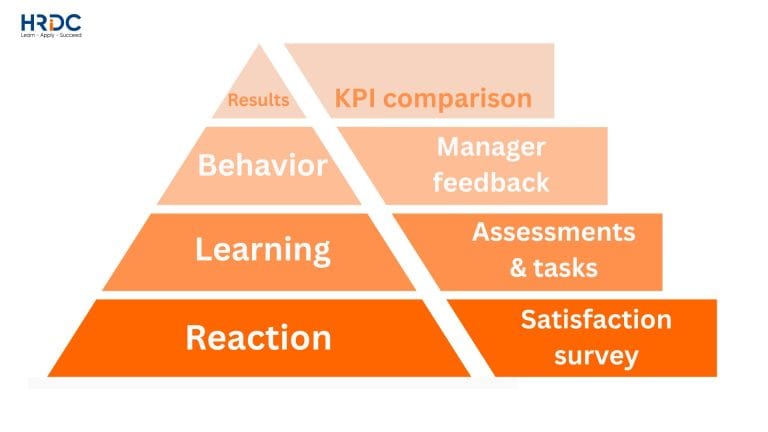In a global economic landscape characterized by volatility and fierce competition, human capital is consistently regarded as the most invaluable asset of any enterprise. To sustain and expand competitive advantage, investment in Learning & Development (L&D) has become an indispensable factor for survival. Yet, a significant number of businesses remain uncertain about the true efficacy of their training programs. Millions, even billions, of VND are poured into L&D annually, but do these expenditures genuinely yield commensurate value? How can the Return on Investment (ROI) of L&D be objectively quantified, moving beyond mere anecdotal assessments? Current realities reveal that the absence of a clear measurement framework not only leads to resource waste but also impedes the L&D department's ability to demonstrate its value to senior leadership. When the impact of training on business performance cannot be transparently articulated, organizations forfeit invaluable opportunities to optimize programs, reallocate budgets, and adapt swiftly to market shifts. The risk of obsolescence is not confined to products or technology; it also silently looms within the capacity for internal resource development if a scientifically sound, adaptive effectiveness evaluation system is lacking.
Fortunately, this challenge is not without a solution. For over six decades, Kirkpatrick’s four-level evaluation model has emerged as a gold standard, validated by time and widely adopted globally. This model not only provides a comprehensive measurement tool but also represents a logical thought system, enabling organizations to view the training process as a clear cause-and-effect chain, from learners’ initial reactions to the ultimate impact on business outcomes.
A thorough understanding and judicious application of the Kirkpatrick model is precisely the key for businesses to transform L&D from a mere cost item into a strategic investment, delivering sustainable and quantifiable value.
1. Demystifying the Kirkpatrick Model – The Foundation of Comprehensive L&D Evaluation
To truly master the art of measuring training effectiveness, we must return to the foundational: the Kirkpatrick model. First introduced in the 1950s by Donald Kirkpatrick, Professor Emeritus at the University of Wisconsin, this model emerged as organizations began to recognize the importance of training but lacked a standardized methodology for assessing its impact. Kirkpatrick pioneered a structured measurement framework, empowering L&D managers not only to “know” that training programs were taking place but also to “understand” their true effectiveness.
1.1. Context of Origin and the Significance of Donald Kirkpatrick
Before the advent of the Kirkpatrick model, training evaluation often extended no further than assessing learner reactions or simply counting participant numbers. Donald Kirkpatrick, with his profound foresight, recognized that for training to truly be meaningful, a more comprehensive evaluation approach was necessary, one directly linked to business objectives. He developed the four-level model as a stratified system, allowing organizations to evaluate from the most basic elements to the most macroscopic impacts. His significance lies not solely in creating the model, but also in shaping the very thinking about L&D effectiveness evaluation, transforming it from a formalistic activity into a strategic imperative. To this day, despite the emergence of numerous other models, Kirkpatrick remains the starting point, the common language within the global L&D community.
1.2. The Core Purpose of the 4-Level Model

The core purpose of the Kirkpatrick model is not merely to provide a checklist of elements to be evaluated. Instead, it embodies a strategic thinking system, a logical framework that assists L&D managers and business leaders in:
- Understanding the cause-and-effect relationship: From how learners “feel,” to what they “learn,” how their “behavior changes,” and ultimately, how this “impacts” business results.
- Designing more effective programs: By thinking backward from the results level, the model helps in setting clear training objectives aligned with business goals.
- Demonstrating the value of L&D: Providing concrete evidence of training benefits, thereby facilitating easier persuasion of senior leadership for investment.
- Optimizing resource utilization: Identifying ineffective programs or those in need of improvement, thus preventing wasted budget and time.
1.3. Overview of the 4 Levels – From Reaction to Ultimate Results
The Kirkpatrick model is constructed upon four distinct yet intimately interconnected levels, progressively increasing in complexity, measurement cost, and the demonstrable level of value:
- Level 1: Reaction: Measures learners’ initial perceptions and satisfaction with the training program.
- Level 2: Learning: Assesses the extent of knowledge, skill, or attitude acquisition by learners after the training.
- Level 3: Behavior: Measures changes in how learners perform their daily work after completing the program.
- Level 4: Results: Evaluates the ultimate impact of the training program on the organization’s core business indicators.
Each of these levels is not merely an independent stopping point but a crucial link in the training value chain. A positive reaction can lead to effective learning, which in turn fosters behavioral change, and ultimately contributes to business outcomes. Grasping this interconnectedness is key to applying Kirkpatrick comprehensively and optimally.
2. Delving into Each Kirkpatrick Level – Theory and Practical Application
To truly grasp and apply the Kirkpatrick model, we must delve into each level, not only in terms of theory but also concerning measurement methodologies and practical examples within the modern corporate environment.
2.1. Level 1: Reaction – Initial Impressions Shape Attitudes
The Reaction level is the starting point, measuring learners’ immediate perceptions, satisfaction, and feedback regarding the training experience. However, it transcends merely whether learners “liked” the course. A comprehensive reaction assessment also explores the relevance of the content to their job, the professionalism of the instructor, the quality of materials, the comfort of the learning environment, and the perceived overall value the course delivers. A positive reaction is a pivotal factor in fostering motivation, engagement, and readiness to absorb knowledge at subsequent levels. If learners feel bored or irrelevant, their ability to learn and apply will significantly diminish.
- Aligned Objectives: The primary objective at this level is to ensure a positive learning experience, creating a conducive environment for learners to be receptive to new knowledge and skills. It also helps L&D identify areas needing improvement in terms of organization, instructional methods, or content.
- Practical Measurement Methods:
- Feedback forms/Surveys: These are the most common tools. Design both quantitative (e.g., Likert scale from 1-5 for satisfaction) and qualitative questions (open-ended questions like “What did you like most?”, “How could the course be improved?”). Questions should cover: instructor, content, methodology, materials, duration, and learning environment.
- Focus groups: Organize small group discussions after the course to gather deeper qualitative feedback, gaining clearer insights into learners’ perceptions, experiences, and suggestions for improvement.
- Observation: Observe learners’ levels of interaction, participation, and emotional expressions throughout the training process. An engaging class with numerous questions and discussions often indicates a positive reaction.
- Instant Feedback Tools: Utilize quick survey apps on phones or live polling systems to collect immediate feedback during the learning process.
- Practical Example: A large technology company organized an “Agile Leadership Skills” training course for 50 mid-level managers. After each session and at the course’s conclusion, they distributed anonymous online surveys. Questions included: “How would you rate the instructor’s delivery?”, “Was the course content practical and easy to apply?”, “Were you satisfied with the learning environment and organization?” The results showed 92% of participants were generally satisfied, particularly appreciating the group practical activities and interaction with the instructor. Some feedback regarding session duration adjustments was noted. This clearly demonstrated a good Reaction level, laying the groundwork for deeper evaluation levels.
2.2. Level 2: Learning – The Transformation of Knowledge and Skills
The Learning level measures specific changes in learners’ knowledge, skills, attitudes, or self-confidence brought about by the training program. It directly answers the question: “What did the learners actually learn?” This level moves beyond perception to quantifiable changes in core competencies. It is the first tangible evidence that training has succeeded in imparting its content.
- Aligned Objectives: The main objective is to ensure learners have acquired and mastered the knowledge, skills, or attitudinal shifts specified in the course’s learning objectives. If the course objective is “Understanding ISO 9001 procedures,” this level will measure the extent of that understanding.
- Practical Measurement Methods:
- Pre/Post-tests: This is the most effective method for measuring knowledge gain. Comparing scores before and after shows the level of learning achieved. Tests can be multiple-choice, fill-in-the-blank, or short essay questions.
- Simulations/Exercises: For skills (e.g., sales skills, software usage skills), learners perform simulations of real-world situations. Evaluation is based on clear criteria for correct and effective execution.
- Competency assessments: Use standardized competency assessment tools to compare learners’ proficiency before and after training. This is especially important for specialized skills.
- Case Study Analysis/Scenario Exercises: Learners are required to solve a real-world problem or analyze a case study, applying learned knowledge.
- Completion/Attendance rates: Although not a direct measure of learning, high completion and attendance rates are positive indicators that learners have fully engaged with the training content.
- Practical Example: A financial company invested in an “Advanced Data Analysis with R” training course for its team of analysts. Before the course, they took a test assessing basic R syntax knowledge and code comprehension. After three months of training, analysts completed a similar test and a large practical exercise requiring complex data analysis. Results showed the team’s average score increased by 40% on the theoretical test, and the time to complete the practical exercise decreased by 25% with higher accuracy. This clearly demonstrated that the Learning level was achieved.
Training DA
2.3. Level 3: Behavior – Application in the Real Work Environment
The Behavior level is a critical turning point, determining whether learners genuinely apply what they have learned to their daily work. This is the crucial bridge between classroom knowledge and actual performance. Behavioral change must be tangible, observable, and measurable, not merely a shift in mindset. It necessitates a supportive work environment that facilitates and encourages learners to practice and sustain new behaviors.
- Aligned Objectives: The objective at this level is to produce observable behavioral changes directly relevant to the training objectives and individual or team performance improvement goals. For example, after communication skills training, the goal is to see employees communicate more openly and practice active listening.
- Practical Measurement Methods:
- 360-degree Feedback: This is a powerful tool. Gather feedback from multiple sources: direct managers, peers, subordinates (if applicable), customers, and learners’ self-assessments regarding specific behavioral changes related to the training.
- On-the-job observation: Directly observe learners performing their tasks in the actual work environment. This requires competent observers and clear evaluation criteria.
- Interviews/Surveys with direct managers: Inquire about specific behavioral changes in employees who participated in the training. Managers are often the first to notice changes.
- Performance reports/Individual KPIs: Examine changes in individual performance indicators directly linked to the trained behavior (e.g., number of sales calls, first-call resolution rate for customer issues).
- Behavioral journals/Action plans: Ask learners to document their process of applying new skills to their work, noting challenges and successes.
- Mentor/Coaching: Having a mentor or coach closely monitor and evaluate the application of new behaviors is also an effective method.
- Practical Example: A large retail chain invested in a “Superior Consulting and Sales Skills” training course for its store staff. After the course, they implemented a behavioral evaluation system including:
- 360-degree Feedback: Store managers and colleagues assessed employees’ proactivity in consulting, listening skills, and ability to cross-sell.
- Mystery Shopping: Undercover customers visited stores and rated employees based on trained communication, consulting, and problem-solving skills.
- Customer Log Analysis: Recorded the number of add-on products sold per transaction and the conversion rate of leads to paying customers. The results showed that 75% of employees demonstrated clear improvements in their consulting behavior, and the add-on sales rate increased by 15% within three months. This provided strong evidence of change at the Behavior level.
2.4. Level 4: Results – Tangible Business Impact
The Results level is the pinnacle of the Kirkpatrick model, evaluating the ultimate, tangible impact of the training program on the organization’s core business indicators. This is the most challenging level to measure but is critical for demonstrating the strategic value of L&D. It answers the crucial question: “What business benefit did the training bring, in terms of finance or operations?”
- Aligned Objectives: The ultimate objective is to demonstrate the Return on Investment (ROI) of training, directly linking L&D initiatives to the enterprise’s overarching strategic goals, such as increasing revenue, reducing costs, improving quality, boosting productivity, or enhancing customer/employee satisfaction.
- Practical Measurement Methods:
- Business Performance Indicators (KPIs) This is the primary method. Indicators can include:
- Increased revenue/profit (e.g., after sales skills training, sales revenue increases).
- Reduced operating costs (e.g., training on energy efficiency, utility costs decrease).
- Increased productivity (e.g., training on new tools, number of products/services completed per employee increases).
- Reduced error/defect rates (e.g., technical training, product defect rate decreases).
- Improved product/service quality (e.g., customer ratings for product quality increase).
- Increased customer/employee retention rates (e.g., management skills training, employee turnover decreases).
- Reduced task completion time (e.g., training on optimized processes, time to complete tasks decreases).
- Cost-Benefit Analysis: Compares the total investment cost of training (including direct costs like tuition, instructor fees, materials, and indirect costs like lost employee work time, program management costs) with the total economic benefits gained (cost savings, revenue increase).
- Return on Investment (ROI) Analysis: This is the method for quantifying financial value. ROI = (Benefits obtained – Training Costs) / Training Costs * 100%. A positive ROI indicates that training yielded a profit.
- Business Performance Indicators (KPIs) This is the primary method. Indicators can include:
- Practical Example (Case Study): A large electronics manufacturing company faced high material waste and product defect rates in its assembly line. After analysis, they determined the cause was limited employee skills in machine operation and maintenance. The company decided to invest 500 million VND in a specialized “Precision Industrial Machine Operation and Maintenance” training course for 150 technicians over three months.
- Before training: Average material waste rate was 7%, product defect rate was 4%.
- After training (monitored for 6 months): Material waste rate decreased to 3%, product defect rate decreased to 1.5%.
- Impact Calculation: The reduction in waste and defects saved the company an average of 1.5 billion VND per month from raw materials and rework costs.
- ROI Calculation: (Total economic benefits gained in 6 months – Training Costs) / Training Costs = (1.5 billion VND/month * 6 months – 500 million VND) / 500 million VND = (9 billion VND – 500 million VND) / 500 million VND = 8.5 billion VND / 500 million VND = 17.
- Result: ROI = 1700%. This means for every 1 unit of currency invested in training, the company gained 17 units of profit. This is a compelling demonstration of L&D’s strategic impact at the Results level.
- Challenges: This level is often influenced by numerous external factors (market changes, competitor actions, macroeconomic conditions, etc.). Isolating the specific impact of training requires careful, sometimes complex, research methods (e.g., using control groups). However, even demonstrating a strong correlation is a significant achievement.
3. Strategic Application of Kirkpatrick in Business
Mastering the theory is the first step, but applying Kirkpatrick practically and effectively demands a systematic strategy.
3.1. Start from Level 4 – Think Backwards from Results
The most common mistake in L&D is to begin by designing a program without a clear ultimate objective. To apply Kirkpatrick effectively, start from Level 4 (Results). This means that before even considering what course to offer, clearly define the business objective the organization aims to achieve.
- Example: If the business objective is to “Reduce customer complaints by 20% in the next 6 months,” then:
- Level 4 (Results): Reduce customer complaint rates.
- Level 3 (Behavior): What behaviors do employees need to change to reduce complaints? (e.g., Active listening skills, prompt problem resolution, clear and professional communication).
- Level 2 (Learning): To exhibit those behaviors, what knowledge and skills do employees need to acquire? (e.g., New complaint handling procedures, non-violent communication techniques, negotiation skills).
- Level 1 (Reaction): How should the training program be designed to make learners feel engaged, useful, and ready to absorb that knowledge/those skills? (e.g., Hands-on training, situation simulations, instructors with practical experience). This backward thinking ensures that every L&D program has a clear purpose and directly contributes to the organization’s strategy.
3.2. Design Training Programs Based on Measurable Objectives
Once objectives are clear, program design must integrate measurement methodologies from the outset. Each Kirkpatrick level requires specific tools and data collection plans.
- Example: If you want to measure Level 3 Behavior (communication skills), the program needs to include video-recorded practice sessions, role-playing activities, or group projects to yield observable data. If you want to measure Level 4 Results (complaint reduction), a system to track complaint KPIs before and after training is essential.
3.3. Collect Continuous and Diverse Data
Measurement should not be a one-time event. Data collection needs to be continuous, at multiple points in time (before, during, immediately after, and several months after training), and from various sources.
- Utilize a combination of qualitative methods (interviews, focus groups) and quantitative methods (numerical surveys, test scores, KPIs).
- Ensure anonymity and objectivity when collecting feedback, encouraging honesty.
3.4. Analyze and Report Results – Demonstrating L&D Value
This is the crucial step to “turn data into a story.” Raw data is meaningless if not analyzed and presented persuasively.
- Analysis: Compare pre- and post-training data, identify trends, and correlations.
- Reporting: Present results clearly, focusing on ROI and business impact. Use intuitive charts and graphs.
- Audience: Reports should be tailored to the audience (e.g., senior leadership will be more interested in ROI and business impact than course satisfaction scores).
- Example: Instead of just saying “80% of learners were satisfied,” report “Thanks to Training Program A, customer satisfaction increased by 5%, and revenue increased by 10 billion VND this quarter.”
3.5. Maintain and Continuously Improve
L&D evaluation is not a one-off event but a continuous improvement loop.
- Use data from Kirkpatrick to identify strengths to leverage and weaknesses to address in future training programs.
- Adjust content, methodologies, and instructors based on feedback and results.
- Monitor long-term to ensure the sustainability of behavior and results.
4. Beyond Kirkpatrick – Integrating with Other Evaluation Frameworks
While the Kirkpatrick model provides a robust foundation, in the complex landscape of modern L&D, combining it with other evaluation frameworks and technologies will yield a more comprehensive picture.
4.1. Kirkpatrick and ROI: An Inseparable Relationship
The Kirkpatrick model provides qualitative and quantitative data at various levels, but to demonstrate true financial value, calculating ROI is essential. ROI (Return on Investment) is a financial indicator that shows the efficiency of an investment.
- Basic ROI Formula for Training: ROI (%) = [(Monetary Benefits from Training – Training Costs) / Training Costs] * 100%
- Monetary Benefits: Can include increased revenue, reduced costs, increased productivity, reduced employee turnover, improved quality, etc.
- Training Costs: Include direct costs (tuition, instructor fees, materials, technology, venue) and indirect costs (lost employee work time, program management costs). Kirkpatrick provides the necessary inputs for calculating “Monetary Benefits from Training,” especially from the Behavior and Results levels.
4.2. Connecting with the Phillips ROI Model – Elevating Financial Measurement
To address the challenge of isolating the impact of training (a factor often influenced by numerous external variables), Jack Phillips developed the Phillips ROI Model (also known as the 5-level Phillips Model). This model adds a fifth level to Kirkpatrick:
- Level 5: ROI (Return on Investment): Measures the financial benefits of the training program compared to its costs, taking into account the isolation of other influencing factors. The Phillips model offers methodologies to isolate the impact of training, such as using control groups, trend analysis, estimating the impact of other factors and subtracting them. Combining Kirkpatrick with Phillips’ methodology allows organizations to produce reliable and highly persuasive ROI figures.
4.3. The Role of Technology in L&D Measurement
In the digital age, technology has become a powerful ally, making L&D effectiveness measurement easier and more precise than ever.
- Learning Management Systems (LMS) and Learning Experience Platforms (LXP): These platforms not only deliver learning content but also integrate tools for measuring reactions (Level 1), tracking course completion progress, and test results (Level 2). Automated reporting and data analysis capabilities save L&D time and provide a comprehensive overview.
- Online Survey and Assessment Tools: Platforms like SurveyMonkey, Google Forms, and Qualtrics enable flexible survey design, automated feedback collection, and preliminary data analysis at Level 1 and partially at Level 3 (through self-assessment or 360-degree feedback).
- Performance Management Systems: These systems allow for tracking and evaluation of individual and team KPIs, providing crucial data for Level 3 (Behavior) and Level 4 (Results). The integration between L&D and performance management systems directly links training to business objectives.
- Business Intelligence (BI) Tools: Tools like Power BI and Tableau help aggregate and analyze data from various sources (LMS, KPI systems, financial data) to create intuitive reports, helping senior leadership easily grasp the full picture of L&D’s ROI.
- Artificial Intelligence (AI) and Machine Learning (ML): In the future, AI can assist in analyzing learning behaviors, predicting post-training performance, and even personalizing learning experiences to optimize individual effectiveness, thereby indirectly improving measurement capabilities at higher levels.
L&D – A Prudent Investment, Yielding Sustainable Success
In a world where change is the only constant, investing in L&D is no longer an option but a strategic imperative. However, this investment truly delivers value only when its effectiveness is measured scientifically and transparently. The 4-level Kirkpatrick evaluation model stands as a steadfast compass, helping Vietnamese businesses transform L&D from a mere “cost” into a “strategic investment” that delivers quantifiable value.
A thorough understanding and judicious application of the Kirkpatrick model, from measuring Reaction, Learning, and Behavior to demonstrating tangible Business Results, not only optimizes the effectiveness of training programs but also elevates the strategic standing of the L&D department within the organization. When equipped with the ability to clearly demonstrate ROI, L&D transforms into a genuine business partner, contributing to the organization’s growth and sustained prosperity.
The journey to building a comprehensive L&D evaluation system may demand an investment of time and resources, but the benefits it yields are immeasurable. From making more informed decisions about training budgets to cultivating a dynamic, adaptable, and high-performing workforce, each step in applying Kirkpatrick is a critical stride forward.
Do not let your organization’s training efforts remain an unquantified expense. Begin today by delving deeper, flexibly applying the Kirkpatrick model, and harnessing the power of technology to transform L&D into a strategic leverage point – helping your business not only adapt but also lead the way into the future. And if you seek a clear roadmap, practical tools, and expert guidance, HRDC’s NextGen L&D program is the right starting point. This course is specifically designed to equip L&D teams with the strategic mindset, modern tools, and practical methods for applying Kirkpatrick, linking it to KPIs, and measuring its impact on behavior and business performance. Additionally, you will receive a complimentary set of 50 gamification videos, enhancing the learning experience within your organization.
Training is not just about “having a class” – it must create results.
➡️ Explore the program at: https://www.learntogrow.com.vn/nextgen-l_d
Related Articles:
- The Future of Work: What Does L&D Need to Prepare for Rapid Changes?
- L&D pro skills – HRDC
- 4 things you need to know about the R.O.I model in training effectiveness evaluation
- L&D Challenges in the Digital Era – 2025
_____
HRDC – Learn – Apply – Succeed
📌LTG: https://www.learntogrow.com.vn/nextgen-l_d
🌐Website: https://hrdc.com.vn
🚨Hotline: 0866 566 366 – 0585 27 28 29
📧Email: chamsockhachhang@hrdc.com.vn
🏬Address: Dolphin Plaza – 28 Tran Binh – My Dinh 2 Ward – Nam Tu Liem District – Hanoi





